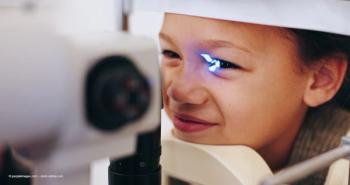
WIO 2023: New developments in vitreoretinal surgery 3D viewing systems and robotics: The future Is now
The 3D viewing systems and digital microscopes offer numerous advantages for performing the procedures.
Digital microscopes and 3D visualization systems are here to stay, according to Maria Berrocal, MD, who discussed some of the technologies pros and cons and the effect on retinal practice at the 2023 Women in Ophthalmology Summer Symposium, Marco Island, FL. She is in private practice in San Juan, Puerto Rico.
The 3D viewing systems and digital microscopes offer numerous advantages, ie, expanded field of view, expanded depth of field and resolution, increased magnification, ability to manipulate digital images to enhance structures, integration of data into images, ergonomic benefits, and teaching capabilities, she enumerated.
Heads-up systems
The Alcon Ngenuity-Open platform can be used with any microscope, has a 55-inch viewing LED screen with 4 colors per pixel; provides customized image, hues, color, and resolution; provides data fusion to integrate systems; and is continuously upgraded. The disadvantage is that surgeons cannot view the monitor straight on.
The Zeiss Artevo 800 microscope-OCT integrated, which has hybrid capability in that the surgeon can use oculars, includes an intraoperative optical coherence tomography from Lumera 700. The disadvantages are that it is a closed platform with no image enhancement capabilities.
Digital systems
The BVI-Beyeonics One exoscope with headset viewing and controls provides head movement control functions and the ability of the camera to tilt. The drawbacks are the weight of the headset, the small viewing screen, and the closed platform.
The Bausch & Lomb SeeLuma digital microscope includes fully digital binoculars and an unobstructed view, a 55-inch standalone and 31-inch stand mounted monitors, and is an interactive platform. The disadvantage is that it is a closed platform.
The Leica Proveo 8-2025 features Enfocus, high-definition OCT and en-face imaging, can be used heads-up or with oculars, increased magnification, and quick focus. The drawbacks are the 27-inch screen, no ability to enhance images, not yet available in the US and a closed platform.
The Ocutrx-OR-Bot-2024 with a holographic headset has a 12K optical head, digital binoculars in the robotic arm and voice activation, and an 8K glasses-free 32-inch monitor. The disadvantages are that it is still being developed and the platform is closed.
Robotics for vitreoretinal surgery
Berrocal reported that most of these technologies are still being developed. The aim is to create “smart surgery” with artificial intelligence (AI), which includes data analytics of the instruments in the eye; compensation for surgeon tremor; ocular stabilization; and the ability to perform very precise maneuvers like subretinal injections and vessel canalization.
The Robotics technologies that are being developed are the following
The Zeiss Preceyes Surgical System is the only one commercially available, but only in the European Union, not in the USA. It is a robotic assistant that can use all instruments, with its use eye movements are minimized, hand tremors are filtered, and precision of movements exceeds 20 microns.
The Steady-Hand Eye Robot from Johns Hopkins University is a cooperatively controlled robot, is surgeon controlled, eliminates tremors, and is used in vein cannulations and membrane peeling.
The prototype IRSS from the University of California Los Angeles is an intraoperative robotic with interventional and surgical systems that offers cockpit-augmented reality visualization, a robot that manipulates 2 surgical instruments, and 3D and teleoperate procedures.
The Mynutia robotic system does not use a joystick; it provides hand, eye, and instrument stability, surgical precision increased 10 times, and can perform vessel canalization.
Forsight Robotics includes the ORYOM Robotic Hand, a miniature robot; data analytics; AI-based learning algorithms; stereoscopic imaging; and improved surgical performance.
The Smartsurg project is a wearable surgical system, has anthropomorphic multi-fingered surgical instruments, and a 3D viewing headset.
The Micron from Carnegia-Mellon Robotics Institute offers an intelligent hand-held instrument that has 6 sensors and 3 actuators, reduces tremors and oscillations by 50%, and has machine learning.
Horizon Surgical Systems is involved in development of robotics, medical imaging, and AI.
Finally, Ophthorobotics AG is involved in developing robots for intravitreal injections, eye tracking, and disinfection.
Berrocal concluded, “Digital microscopes and 3D visualization systems are the present and the future. The technologies are very advanced and are improving continuously. Robotics for use in vitreoretinal surgery are still being developed; they are promising for high-precision maneuvers, like vessel cannulation, and subretinal injections.”
Maria Berrocal, MD
E: mhberr78@gmail.com
She is in private practice in Drs. Berrocal & Associates in San Juan, and an Associate professor at the University of Puerto Rico. Berrocal is a speaker for and consultant to Alcon.
Newsletter
Keep your retina practice on the forefront—subscribe for expert analysis and emerging trends in retinal disease management.
















































